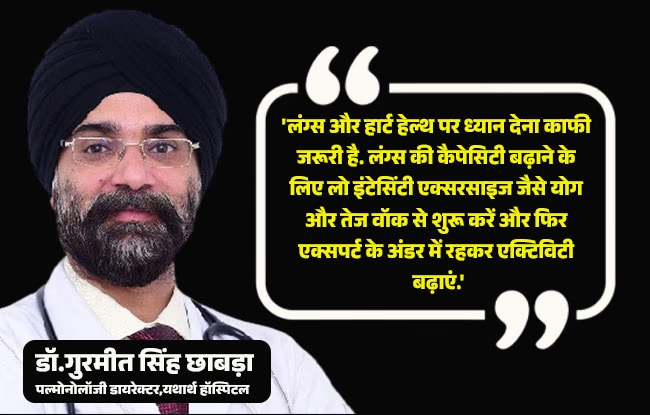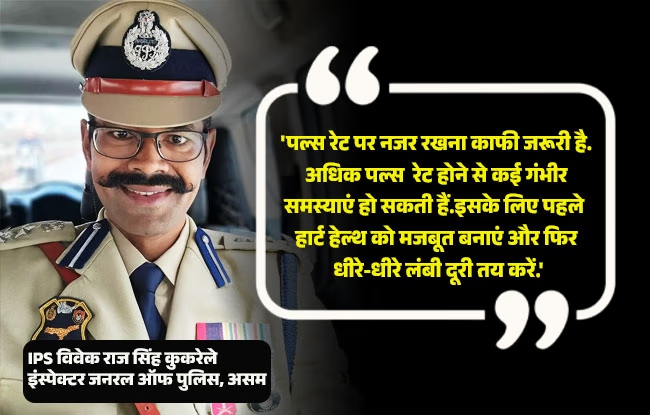During the physical test of the soldier recruitment exam in Jharkhand, around 11 candidates lost their lives. They were required to run 10 kilometers in 1 hour. The race was scheduled for 5 AM, and all candidates lined up at 5 AM, but the race started at 11 AM. Consequently, many people fainted, and about 11 lost their lives.
Running is considered an excellent cardiovascular exercise. It strengthens the heart and lungs and burns many calories. While running may seem easy, knowing the correct technique is essential to avoid side effects. If you have a heart condition, a small mistake could be fatal.
Stamina and endurance are terms that indicate how long you can engage in physical activity. Many people use them interchangeably, but there is a slight difference.
Stamina refers to the time you can perform any physical activity with complete capacity. High-intensity activities like football, triathlons, rowing, martial arts, tennis, and basketball require stamina. Good stamina helps you stay physically and mentally healthy.
Endurance indicates how long an activity can be done. Simply put, endurance shows how well your heart, lungs, and muscles can deliver blood and oxygen throughout the body to perform an activity for an extended period. Running a marathon is an excellent example. The cardiovascular system quickly delivers oxygen and blood throughout the body, enabling prolonged activity. Endurance activities focus more on maintaining the activity for longer rather than increasing capacity.
Gradually Increase Capacity: Dr. Gurmeet Singh Chabbra

Source: aajtak
Dr. Gurmeet Singh Chabbra, Director of Pulmonology at Yatharth Hospital in Faridabad, emphasized that 'lungs are the most vital organ of the human body. For runners, strong lungs are crucial.' He explained that 'air pollution around you significantly affects lung health. Even if no factory is nearby, microscopic pollutants can reach your lungs through breathing, potentially causing damage or even leading to heart attacks. Hence, be aware of your environment and maintain good ventilation and plant trees around your home.'
'To increase lung capacity, avoid sudden strenuous activity. Start with low-intensity exercises like yoga and walking under the guidance of an expert, then gradually increase the intensity. Don't rush into 2-3 kilometers of running on the first day. Strengthen your lungs and heart for prolonged activities, then gradually increase the load.'
Dr. Gurmeet advised that one should also consider existing lung or heart conditions, like asthma or Chronic Obstructive Pulmonary Disease (COPD), or whether you had Covid-19. People who had Covid-19 often collapse during any activity, sometimes leading to sudden death. Therefore, activities should be done under expert supervision, with basic body checks, pulmonary function tests, and a thorough understanding of one's current health condition. Stop exercising if you experience shortness of breath or chest pain immediately.'
'Get vaccinated after any lung infection since every infection weakens the lungs. A balanced diet, protein, carbs, fats, fibers, vitamins, and minerals, coupled with good sleep, are crucial for maintaining lung and heart health. These elements help keep lungs and heart in peak condition.'
Practice and Diet: IGP, IPS Vivek Raj Singh

Source: aajtak
IGP Vivek Raj Singh, responsible for Modernization Planning and Coordination in Assam's Bodoland Territorial Region, is a fitness enthusiast and runs at least 10 kilometers daily. He shared his long-distance running tips, stating, 'Many people don't monitor their pulse rate while running. High pulse rates can lead to severe issues; hence, always keep an eye on it. Strengthen your heart health first, and then go for long-distance running, which requires consistent practice.'
'I started with fast walking, covering 15-20 kilometers daily. To get ready for long-distance running, begin with brisk walking and set small goals. Don't aim for a 10-kilometer run on the first day.'
IGP Vivek Raj Singh added, 'Once you have proper practice, focus on your diet. Running consumes a lot of energy, so eat carbs before running. Bananas, bread slices, and rice can provide good energy during the run.'
According to Healthline, pulse rate measures the number of heartbeats per minute. For a healthy person, it ranges from 60 to 100 beats per minute but can vary depending on age, gender, activity, and health. To determine the maximum pulse rate, subtract your age from 220. For example, a person aged 30 has a maximum pulse rate of 190 (220-30).
How to Start Running

Source: aajtak
Celebrity coach Robin Behl, who has trained celebrities like Aditya Roy Kapoor, Varun Dhawan, and Kiara Advani, said, 'Running 10 kilometers might be easy for some and challenging for others. Couch potatoes who rarely engage in physical activity will find sudden running tough. The first thing needed is practice. It usually requires 1-2 months of practice. Start with light running for 1 or 1.5 kilometers without focusing on time.'
'Create a pyramid-style chart, starting with 1 kilometer, then 3 kilometers, and back to 1 kilometer. Initially, don't worry about time; fearing you might not run as required can set in if you track it.'
'Eventually, begin timing yourself. Start with 5 kilometers and aim to complete it in 30 minutes. Then, practice 7 kilometers runs. Finally, track 5 kilometers again, which will become comfortable.'
'Additionally, focus on sleep, nutrition, and recovery, as they are vital for healthy running. Strength training can help strengthen joints.'
Focus on Stretching and Mobility: Celebrity Physiotherapist Sagar Pujari

Source: aajtak
Sagar Pujari, a physiotherapist who has worked with celebrities like Hrithik Roshan and Tiger Shroff, said, 'Long-distance runners often neglect recovery. Many believe nutrition is most important after running, but stretching is crucial for muscle recovery.'
'Stretching loosens muscles and reduces joint load during running. Warm up and stretch using foam rollers before running. Mobility exercises for quads, hamstrings, mid-back, toes, ankles, calves, and hips will aid long-distance running.'
Treadmill Running vs. Outdoor Running, Which is Better?
There has been an ongoing debate about the benefits of treadmill running versus outdoor running. Experts suggest both have different advantages and disadvantages. It depends on your personal needs and goals whether you prefer treadmill or outdoor running. Experts say outdoor running requires more stamina than treadmill running.
Running on a treadmill may not prepare you for the challenges of outdoor running in the rain. Though you might burn many calories on a treadmill, outdoor running under harsh weather can be more exhausting. Similarly, running in hot, sunny areas or hilly terrains requires more stamina, as treadmills typically operate at a constant speed.
Even if you run at the same speed on a treadmill, outdoor running will generally consume more energy. The difference in calorie burn is not only due to environmental changes but also because the treadmill pushes you forward, resulting in fewer calories burned.
Outdoor runners face uncomfortable weather conditions. High heat can lead to dehydration or exhaustion, and cold or rainy days also present challenges. Running indoors at home or the gym allows you to run anytime, regardless of weather conditions. However, ideal weather for outdoor running is slightly cool to avoid fatigue and dehydration.




